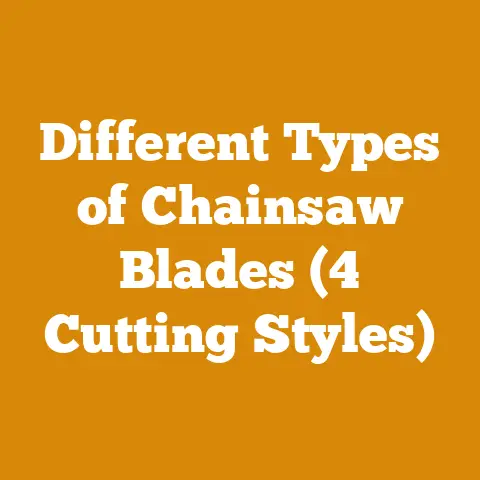craftsman chainsaw parts (Find What You Need)
Facing the Chainsaw Challenge
Ever been stuck mid-job because your chainsaw
decided to quit on you? I know how frustrating
that can be. Understanding the inner workings
of a Craftsman chainsaw can save you from
those unexpected breakdowns. Let’s dive into
the essential parts, so next time, you’re not
left hanging.
Understanding Craftsman Chainsaw Parts
Chainsaws are like puzzles; each piece has its
place and purpose. Knowing these can make
repairs or replacements a walk in the park.
Engine Components
The heart of your chainsaw is the engine.
Without it, you’re holding a fancy stick.
Cylinder and Piston
These are the dynamic duo of the engine,
converting fuel into motion. If your saw loses
power, these might be worn out.
- Tip: Regularly check for wear and tear to avoid costly damage.
- Personal Story: I once had a chainsaw that
kept losing power. After inspecting the cylinder
and piston, I discovered scratches caused by dirt.
It turns out, not cleaning the air filter regularly
led to this mess. Lesson learned!
Spark Plug
Ever tried starting your car without a key? The
spark plug is that key for the chainsaw. It ignites
the fuel-air mixture, getting your engine roaring.
- Warning! Handle with care; a faulty spark plug can lead to engine failure.
- Example: A friend of mine replaced his spark plug and immediately noticed smoother starts and better fuel efficiency.
Fuel System
The fuel system feeds the engine, much like how
coffee fuels me during long days.
Fuel Tank and Lines
Inspect for cracks or leaks. A well-maintained
fuel system keeps your chainsaw running smoothly.
- Tip: Use clean fuel to prevent clogging.
- Story: I remember using old fuel once, thinking
it wouldn’t matter. It did. The chainsaw sputtered and
stalled until I drained the tank and refilled it with fresh fuel.
Carburetor
This tiny part mixes air and fuel in perfect harmony. If
your chainsaw sputters or stalls, it might be a carburetor issue.
- Example: Tuning the carburetor solved my chainsaw’s stalling problem during a big project last summer.
Ignition System
The ignition system is crucial for starting your chainsaw. It includes several components that work together to ignite the engine.
Ignition Coil
The ignition coil generates the electrical spark needed for combustion. If your chainsaw isn’t starting, this might be the culprit.
- Tip: Test the ignition coil with a multimeter to ensure it’s functioning properly.
- Example: A faulty ignition coil was the reason my old chainsaw wouldn’t start during winter. Replacing it did the trick.
Cutting System
This is where the magic happens. It’s all about the chain and bar cutting through wood like butter.
Guide Bar
Think of it as the sword of your chainsaw. It guides the chain, ensuring straight cuts.
- Tip: Keep it clean and lubricated for optimal performance.
- Story: I once neglected to clean my guide bar after a muddy job. The next time I used it, the chain kept slipping off. Cleaning it solved the problem.
Chain
Without a sharp chain, cutting becomes a nightmare. Regular sharpening and tension checks are crucial.
- Warning! Always use protective gear when handling the chain.
- Example: A neighbor borrowed my chainsaw but didn’t check the chain tension. It came loose, causing a minor injury. Lesson: Always check before use!
Chain Links and Teeth
The links connect the chain, while teeth do the cutting. Worn teeth mean inefficient cutting and more effort for you.
- Tip: Sharpen teeth regularly using a round file matching your chain’s pitch.
- Story: During a big storm cleanup, I found my chain teeth dull from previous use. A quick sharpening session saved me hours of hard labor.
Chain Tensioner
The tensioner adjusts chain tightness. Too tight or too loose can cause problems.
- Example: On my first chainsaw project, I ignored tensioning advice. The chain flew off mid-cut, teaching me a valuable lesson.
Safety Features
Safety first! Chainsaws are powerful but can be dangerous.
Chain Brake
This lifesaver stops the chain in case of kickback. Test it regularly to ensure it’s functioning properly.
- Tip: Engage the chain brake whenever carrying or not actively cutting with your saw.
- Example: A quick-reacting chain brake saved me from potential harm during an unexpected kickback event.
Throttle Lockout
Prevents accidental throttle activation, an essential safety feature.
- Story: I’ve seen someone accidentally activate their saw while adjusting their grip. Fortunately, the throttle lockout was engaged, preventing a mishap.
Anti-Vibration System
Reduces fatigue by minimizing vibrations felt through handles during operation.
- Tip: Use gloves designed to absorb vibrations for extra comfort during prolonged use.
Maintenance and Troubleshooting
Regular maintenance can prevent most issues. Let’s keep those headaches at bay with some tips and tricks.
Routine Maintenance
- Clean the Air Filter: Dusty filters choke your engine.
- Check Chain Tension: A loose chain can ruin a good day.
- Inspect Fuel Lines: Look for cracks or damage.
- Lubricate Moving Parts: Reduces wear and prolongs lifespan.
- Tighten Loose Bolts: Vibration can loosen parts over time.
- Test Safety Features: Ensure everything functions as intended before each use.
- Example: Performing routine maintenance before storm season ensured my saw was ready for any emergency tree-felling tasks required after heavy winds hit our area last fall!
Troubleshooting Common Issues
- Chainsaw Won’t Start: Check spark plug and fuel supply.
- Chain Not Cutting Properly: Sharpen or replace chain.
- Chainsaw Stalls: Inspect carburetor settings and engine components.
- Excessive Smoke: May indicate oil/fuel mix imbalance; adjust accordingly.
- Overheating Engine: Clean air vents & ensure adequate lubrication levels maintained throughout operation period(s).
Equipment Requirements and Prerequisites
Before diving into repairs or maintenance, here’s what you need:
Required Tools
- Screwdrivers
- Wrench set
- Spark plug wrench
- Chain sharpener
- Multimeter (for testing electrical components)
- Cleaning brush
- Lubricant
Prerequisite Knowledge
- Basic understanding of mechanical systems
- Familiarity with safety procedures
- Ability to identify common parts & their functions within machine
Safety Precautions
Working with chainsaws requires attention to safety. Always follow these guidelines:
- Wear protective gloves and goggles.
- Ensure chainsaw is turned off before performing maintenance.
- Keep a safe distance from other people when operating chainsaw.
- Be aware of surroundings; watch out for obstacles like rocks or debris that could cause accidents if struck unexpectedly during cutting process(es).
Important Reminders and Next Steps
Keep track of your maintenance schedule. Regular checks can extend the life of your chainsaw and keep you safe. If you’re unsure about any repairs, consult a professional.
FAQs
Q: How often should I replace spark plug?
A: Every 100 hours of use or once seasonally (whichever comes first).
Q: What type of oil should I use for lubrication?
A: Use high-quality bar & chain oil specifically designed for chainsaws only!
Q: How do I know if my chain needs sharpening?
A: If it takes more effort to cut or produces fine sawdust instead of wood chips—sharpen immediately!
Remember understanding Craftman’s parts not only boosts efficiency but also ensures safety while working outdoors! Happy cutting!






